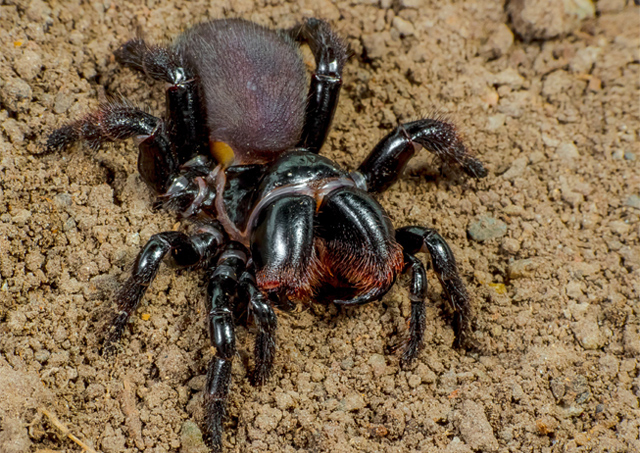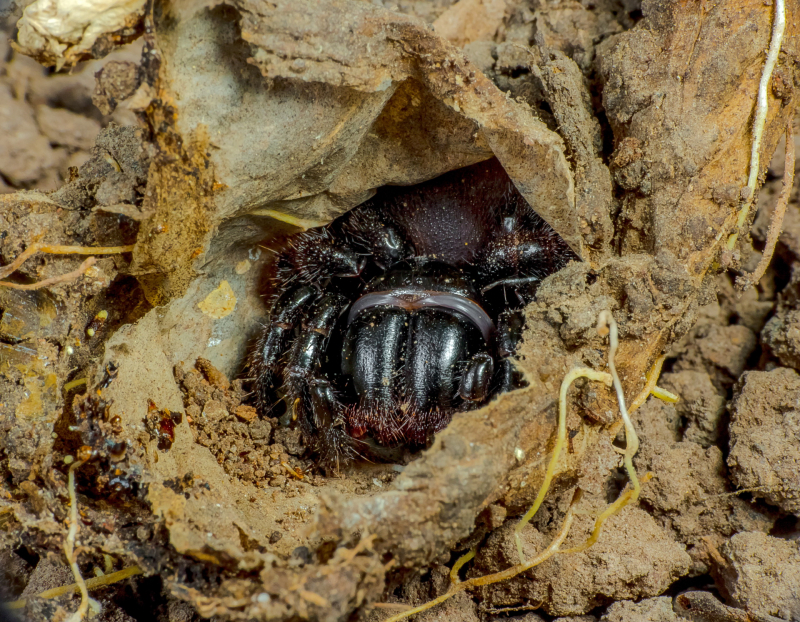Mouse Spider
The mouse spider (missulena) is a genus of mygalomorph spiders in the family Actinopodidae. It was first described by Charles Walckenaer in 1805 and is a senior synonym of Eriodon. These spiders range in size from medium to giant, measuring 1 to 3 centimeters (0.39 to 1.18 in). They feature short spinnerets in the back of the abdomen, high, broad heads with eyes spread out over the front, and glossy carapaces. They primarily eat insects, though they will occasionally eat other small animals if the opportunity arises. They are mostly preyed upon by scorpions, centipedes, and wasps.
Additionally, these spiders display sexual dimorphism. Males are colored differently depending on the species, whereas females are completely black. Men of the red-headed mouse spider (M. occatoria) are brownish or blue-black with brilliant red-tinged jaws, but men of the eastern mouse spider (M. bradleyi) have a bluish patch. The silk-lined burrows of this spider can range in depth from 8 to 22 inches. The adult spider, her eggs, and her hatchlings are protected from predators in a room off the main tunnel that includes a trapdoor. There are some mouse spider burrows with two doors and others with just one. Silken triplines allow the spider to detect the presence of either prey or a potential mate.












